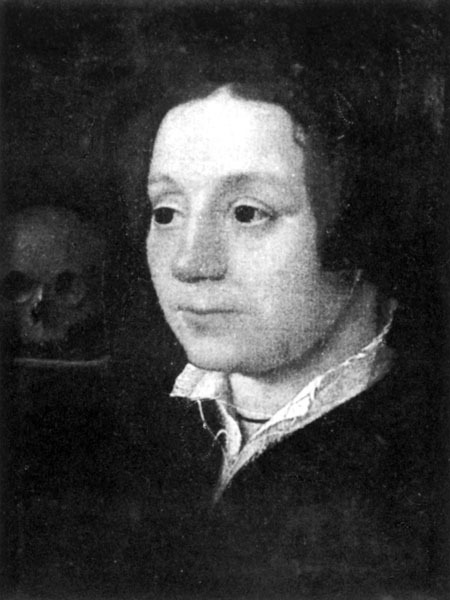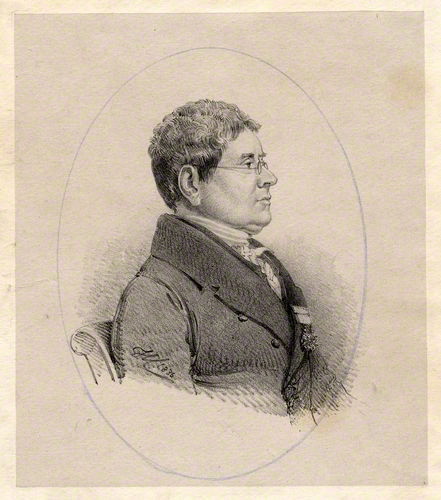|
Blanche Parry
Blanche Parry (1507/8–12 February 1590) of Newcourt in the parish of Bacton, Herefordshire, in the Welsh Marches, was a personal attendant of Queen Elizabeth I, who held the offices of Chief Gentlewoman of the Queen's Most Honourable Privy Chamber and Keeper of Her Majesty's Jewels. Origins She was born at Newcourt, Bacton, Herefordshire, one of the daughters of Henry Myles (Parry was only adopted as a surname after the English manner, from ap Harry, in the next generation) of Newcourt, three times Sheriff of Herefordshire, Steward of Ewyas Lacy and of Dore Abbey, a relative of the Welsh family of Herbert, Earls of Pembroke, also a relative of the prominent Stradling family of St Donat's Castle in Glamorgan, Wales. Her mother was Alice Milborne, the English daughter and co-heiress of Simon Milborne. Her paternal ancestors were of prominent border gentry stock. Early life Brought up in a Welsh cultural environment, Parry was bilingual in Welsh and English. Indications exist o ... [...More Info...] [...Related Items...] OR: [Wikipedia] [Google] [Baidu] |
Aconbury
Aconbury ( cy, Caer Rhain) is a village in the English county of Herefordshire, situated on a road between Hereford and Ross-on-Wye. St John the Baptist Church was originally the church of a nunnery founded before 1237. The style of the current building is late 13th-century. Some restoration work was carried out in 1863 by Sir George Gilbert Scott Sir George Gilbert Scott (13 July 1811 – 27 March 1878), known as Sir Gilbert Scott, was a prolific English Gothic Revival architect, chiefly associated with the design, building and renovation of churches and cathedrals, although he starte .... According to local legend, a phantom monk was once exorcised into a bottle, which is now buried in the wall of the church. On nearby Aconbury Hill is an Iron Age hillfort, Aconbury Camp. References External links Villages in Herefordshire {{Herefordshire-geo-stub ... [...More Info...] [...Related Items...] OR: [Wikipedia] [Google] [Baidu] |
Ferret
The ferret (''Mustela furo'') is a small, domesticated species belonging to the family Mustelidae. The ferret is most likely a domesticated form of the wild European polecat (''Mustela putorius''), evidenced by their interfertility. Other mustelids include the stoat, badger and mink. Physically, ferrets resemble other mustelids because of their long, slender bodies. Including their tail, the average length of a ferret is about ; they weigh between ; and their fur can be black, brown, white, or a mixture of those colours. In this sexually dimorphic species, males are considerably larger than females. Ferrets may have been domesticated since ancient times, but there is widespread disagreement because of the sparseness of written accounts and the inconsistency of those which survive. Contemporary scholarship agrees that ferrets were bred for sport, hunting rabbits in a practice known as rabbiting. In North America, the ferret has become an increasingly prominent choice of ho ... [...More Info...] [...Related Items...] OR: [Wikipedia] [Google] [Baidu] |
Act Of Parliament
Acts of Parliament, sometimes referred to as primary legislation Primary legislation and secondary legislation (the latter also called delegated legislation or subordinate legislation) are two forms of law, created respectively by the legislature, legislative and executive (government), executive branches of ..., are texts of law passed by the Legislature, legislative body of a jurisdiction (often a parliament or council). In most countries with a parliamentary system of government, acts of parliament begin as a Bill (law), bill, which the legislature votes on. Depending on the structure of government, this text may then be subject to assent or approval from the Executive (government), executive branch. Bills A draft act of parliament is known as a Bill (proposed law), bill. In other words, a bill is a proposed law that needs to be discussed in the parliament before it can become a law. In territories with a Westminster system, most bills that have any possibility of becoming ... [...More Info...] [...Related Items...] OR: [Wikipedia] [Google] [Baidu] |
Master Of The Rolls In Ireland
The Master of the Rolls in Ireland was a senior judicial office in the Irish Chancery under English and British rule, and was equivalent to the Master of the Rolls in the English Chancery. Originally called the Keeper of the Rolls, he was responsible for the safekeeping of the Chancery records such as close rolls and patent rolls. The office was created by letters patent in 1333, the first holder of the office being Edmund de Grimsby. As the Irish bureaucracy expanded, the duties of the Master of the Rolls came to be performed by subordinates and the position became a sinecure which was awarded to political allies of the Dublin Castle administration. In the nineteenth century, it became a senior judicial appointment, ranking second within the Court of Chancery behind the Lord Chancellor of Ireland. The post was abolished by the Courts of Justice Act 1924, passed by the Irish Free State established in 1922. History of the Office Until the sixteenth century, the Master of t ... [...More Info...] [...Related Items...] OR: [Wikipedia] [Google] [Baidu] |
Northern Rebellion
The Rising of the North of 1569, also called the Revolt of the Northern Earls or Northern Rebellion, was an unsuccessful attempt by Catholic nobles from Northern England to depose Queen Elizabeth I of England and replace her with Mary, Queen of Scots. Background Elizabeth I succeeded her half-sister Mary I as queen of England in 1558. Elizabeth's accession was disputed due to the questioned legitimacy of the marriage of her parents (Henry VIII and Anne Boleyn), and Elizabeth's own questioned legitimacy due to the Act of Succession 1536. Under Henry VIII and his advisor Thomas Cromwell, power was gradually shifted from regional institutions to royal control. This course was encouraged by Elizabeth's counsellors such as William Cecil and a policy of centralization was the approach favoured by Elizabeth herself at least in regards to the northern border region. Opponents of Elizabeth looked to Mary, Queen of Scots, the descendant of Henry VIII's sister Margaret. The claims were ... [...More Info...] [...Related Items...] OR: [Wikipedia] [Google] [Baidu] |
Great Seal Of England
The Great Seal of the Realm or Great Seal of the United Kingdom (known prior to the Treaty of Union of 1707 as the Great Seal of England; and from then until the Union of 1801 as the Great Seal of Great Britain) is a seal that is used to symbolise the Sovereign's approval of state documents. Scotland has had its own great seal since the 14th century. The Acts of Union 1707, joining the kingdoms of Scotland and England, provided for the use of a single Great Seal for the new Kingdom of Great Britain. However, it also provided for the continued use of a separate Scottish seal to be used there, and this seal continues to be called the Great Seal of Scotland, although it is not technically one. A new Welsh Seal was introduced in 2011. Sealing wax is melted in a metal mould or matrix and impressed into a wax figure that is attached by cord or ribbon to documents that the Monarch wishes to seal officially. The formal keeper of the seal is the Lord High Chancellor of Great ... [...More Info...] [...Related Items...] OR: [Wikipedia] [Google] [Baidu] |
Kat Ashley
Katherine Astley (née Champernowne; circa 1502 – 18 July 1565), also known as Kat Astley, was the first close friend, governess, and Lady of the Bedchamber to Queen Elizabeth I of England. She was the aunt of Katherine Champernowne, who was the mother of Sir Humphrey Gilbert from her first marriage and Walter Raleigh by her second marriage. Parentage Katherine Champernowne's parentage is not known for certain. There are two principal candidates for her father. One is Sir Philip Champernowne, although there is a 1536 letter from Kat to Thomas Cromwell, 1st Earl of Essex which makes reference to her father as having ''"much to do with the little living he has"''. At the time of her birth, Sir Philip's wife, Catherine Carew, was sixteen years of age. However, no contemporary records refer to Kat Ashley and Joan Denny - Sir Philip's daughter - as being sisters. The other candidate is Sir John Champernowne, whose wife was a ... [...More Info...] [...Related Items...] OR: [Wikipedia] [Google] [Baidu] |
Percy Smythe, 6th Viscount Strangford
Percy Clinton Sydney Smythe, 6th Viscount Strangford (31 August 178029 May 1855) was an Anglo-Irish diplomat. Early life He was the son of Lionel Smythe, 5th Viscount Strangford (1753–1801) and Maria Eliza Philipse. In 1769, his sixteen-year-old future father left Ireland, joined the army and served during the American War of Independence. While quartered in New York in the winter of 1776 to 1777, he met and courted Maria. She was the daughter of Frederick Philipse III (1720–1785), the third and last Lord of Philipsburg Manor and a descendant of the Dutch founder of the city. At first, her father rejected Lionel, however, as Philipse was a Loyalist during the war,Purple, Edwin R., "Contributions to the History of the Ancient Families of New York: Varleth-Varlet-Varleet-Verlet-Verleth," New York Genealogical and Biographical Record, vol. 9 (1878), pp. 120–12/ref> the New York Legislature confiscated his estate, one of the largest in the province, and Philipse changed hi ... [...More Info...] [...Related Items...] OR: [Wikipedia] [Google] [Baidu] |
Henry Ellis (librarian)
Sir Henry Ellis (29 November 177715 January 1869) was an English librarian and antiquarian, for a long period principal librarian at the British Museum. Early years Born in London, Henry Ellis was educated at the Mercers' School, and at Merchant Taylors' School, where his brother, the Rev. John Joseph Ellis, was assistant-master for forty years. Having gained one of the Merchant Taylors' exhibitions at St John's College, Oxford, he matriculated in 1796. Librarian In 1798, through his friend John Price, Ellis was appointed one of the two assistants in the Bodleian Library, the other being his future colleague in the British Museum Henry Hervey Baber. He took the degree of B.C.L. in 1802. He was a Fellow of St John's till 1805. In 1800 he was appointed a temporary assistant in the library of the British Museum, and in 1805 he became assistant-keeper of printed books under William Beloe. The theft of prints which cost Beloe his appointment in the following year raised Ellis to th ... [...More Info...] [...Related Items...] OR: [Wikipedia] [Google] [Baidu] |
Tower Of London
The Tower of London, officially His Majesty's Royal Palace and Fortress of the Tower of London, is a historic castle on the north bank of the River Thames in central London. It lies within the London Borough of Tower Hamlets, which is separated from the eastern edge of the square mile of the City of London by the open space known as Tower Hill. It was founded towards the end of 1066 as part of the Norman Conquest. The White Tower, which gives the entire castle its name, was built by William the Conqueror in 1078 and was a resented symbol of oppression, inflicted upon London by the new Norman ruling class. The castle was also used as a prison from 1100 ( Ranulf Flambard) until 1952 ( Kray twins), although that was not its primary purpose. A grand palace early in its history, it served as a royal residence. As a whole, the Tower is a complex of several buildings set within two concentric rings of defensive walls and a moat. There were several phases of expansion, mainly un ... [...More Info...] [...Related Items...] OR: [Wikipedia] [Google] [Baidu] |



_-_Portrait_of_William_Robert_Fitzgerald%2C_2nd_Duke_of_Leinster.jpg)
_p1.262_-_Brancepeth_Castle%2C_Durham.jpg)



